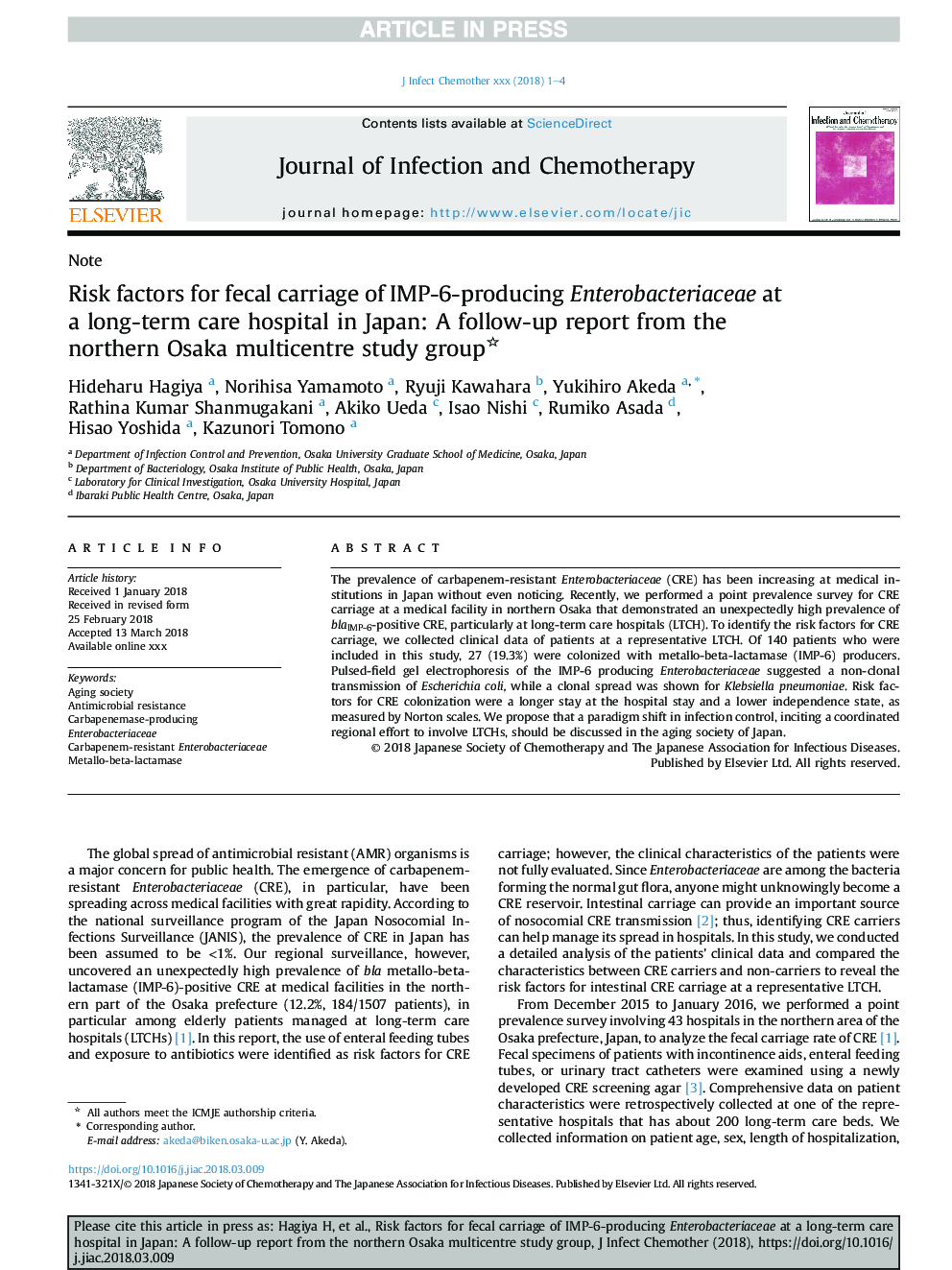| Article ID | Journal | Published Year | Pages | File Type |
|---|---|---|---|---|
| 8944906 | Journal of Infection and Chemotherapy | 2018 | 4 Pages |
Abstract
The prevalence of carbapenem-resistant Enterobacteriaceae (CRE) has been increasing at medical institutions in Japan without even noticing. Recently, we performed a point prevalence survey for CRE carriage at a medical facility in northern Osaka that demonstrated an unexpectedly high prevalence of blaIMP-6-positive CRE, particularly at long-term care hospitals (LTCH). To identify the risk factors for CRE carriage, we collected clinical data of patients at a representative LTCH. Of 140 patients who were included in this study, 27 (19.3%) were colonized with metallo-beta-lactamase (IMP-6) producers. Pulsed-field gel electrophoresis of the IMP-6 producing Enterobacteriaceae suggested a non-clonal transmission of Escherichia coli, while a clonal spread was shown for Klebsiella pneumoniae. Risk factors for CRE colonization were a longer stay at the hospital stay and a lower independence state, as measured by Norton scales. We propose that a paradigm shift in infection control, inciting a coordinated regional effort to involve LTCHs, should be discussed in the aging society of Japan.
Keywords
Related Topics
Life Sciences
Immunology and Microbiology
Applied Microbiology and Biotechnology
Authors
Hideharu Hagiya, Norihisa Yamamoto, Ryuji Kawahara, Yukihiro Akeda, Rathina Kumar Shanmugakani, Akiko Ueda, Isao Nishi, Rumiko Asada, Hisao Yoshida, Kazunori Tomono,
